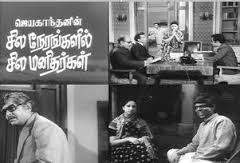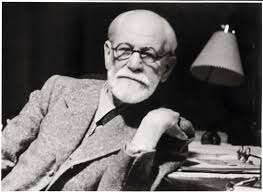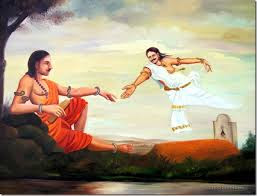The following points are for discussion and debates regarding the application of Freudian notions of pleasure and death drives, his theory of psychosexuality and tripartite mind in the context of Sangam age (circa 300 BC) king Kopperuncholan and the films, Sila Nerangalil Sila Manithargal and Uthiripookal.
There are too many ways to engage with them. I will start with understanding our films differently with two notions of Freud – pleasure drive and death drive, with characters from Sangam age and Sila Nerangalil SIla Manithargal (hereafter SNSM) and Uthiripookal (hereafter UP).


Freud’s pleasure drive principle is tied with the stages he mentions as crucial for child’s development. These stages are oral, anal,phallic,latency and genitals. His theory is known as psychosexual theory and has been seen as controversial by many and unacceptable by others then and now.
However, his theory holds water to relate to disorders at the individual and societal orders and also to relate to them in film narratives where characters live their roles as abnormal entities?

The Freudian theory of psychosexuality is applicable to the chronological order of child’s development and how the progression in this order by the child is related to the development of the Id (unconscious), Ego (conscious) and Super Ego (socially conscious), three parts of the mind he envisions. These parts do not refer to parts of the brain.
These stages are the oral stage (0-1 year), anal (1-3),phallic/oedipal (3-6), latency (6-12) and Genital (12 onwards). According to Freud, if the needs of the child are not met at any of the stages, negative effects occur in adulthood. The oral stage is about the suckling behaviour of the child, the anal stage is about the toilet training related behaviour, the phallic stage is about the child’s understanding of his sexuality vis a vis the father and mother. The latency stage is where the sexuality related identities submerge. The last stage is about the reemergence of the sexuality related needs.
Eros and Thanatos are Greek Gods of Love and Death respectively.
In both SNSM and UP, we find narrative contexts which require Freudian principles of pleasure and death drive to read them critically and differently. Freud’s death drive principle was also influenced by the effects of the deaths caused by the First World War and the personal loss he suffered with the death of his daughter, Sophia.
One person who made/make the lives of Freudian and Lacanian psychoanalysts/feminists happy with his films as fodder for analysis is Hitchcock as the narratives in many of his films are patriarchal narratives. Many feminist scholars believe that they are told from the point of view of a misogynist. Misogynists are those who dislike women. This is not to say that he was deliberately making films which became fodder for film feminists. He was working within a patriarchal society that was home to another patriarchal system, the Hollywood. I think it was the coming together of these forces in his narratives, besides the remarkable mastery he wielded over the medium in seeking perfection and control over all the elements in his frames, shots and scenes, which helped him to complete his homework for the film feminists! You do not require film feminism to discover the patriarch, Hitchcock. On the other hand, film feminism requires Hitchcock to discover itself. Here is what Tania Modelski, a film feminist, tell us about Hitchcock’s connections with film feminism. “in Film Studies, Hitchcock is often viewed as the archetypal misogynist, who invites his audience to indulge their most sadistic fantasies against the female. Some critics have even argued that Hitchcock’s work is prototypical of the extremely violent assaults on women that make up so much of our entertainment today. . . . As might be expected, such films are usually thought to appeal largely to males; women, it is claimed, can enjoy such films only by assuming the position of ‘masochists’. Rape and violence, it would appear, effectively silence and subdue not only the woman in the films – the one who would threaten patriarchal law and order through the force of her anarchic desires – but also the women watching the films: female spectators and female critics.”
How to apply the Freudian notions of pleasure principle and death drive to SNSM and UP? This may require a long lecture. However, here is my short take on the possibilities in this regard.
Uthiripookal’s lead character’s death was caused as much by the crowd which pushes him near the water body as by the pleasure drive and death drive that conditioned his deeds in his domestic and public space. His companions, who chat with him under the tree, in the school and in other public spaces, in fact are also the collaborators with their own versions of the pleasure and death drives, in contributing to the pleasure and death drives of the lead male character. Pleasure is not sexual alone and death is not the physical death alone, if we extend the Freudian logic further. Pleasure is both sexual and the expression of the repressed emotions against the favourite targets of the abnormal character. Similarly, death can be physical and emotional.
Death drive is not only about end stage of human development, death, but the emotional deaths suffered by the person as well as the emotional deaths of others he causes. The pleasure and death drives are in effect the fall out of the unmet needs of the child during the five stage of psychosexual development. Several characters suffer emotional deaths because of the pleasure drive of the leading male character of UP.
Unlike UP, the lead male character in SNSM does not die, but becomes the cause of the emotional death of the lead female character. Every other male character, except the writer, joins the leading male character, to chase, monitor and contribute to the emotional death of the female character.
In mainstream/commercial film narratives, the narrative triangle is constituted by the pleasure driven male and female characters (hero and heroine) and the pleasure and death driven male and female characters (the villains). The narrative triangle has to be reconstituted on the basis of the competitions between the divergent purposes of the characters as linear with two poles, the hero and the heroine. In non-mainstream/new wave films, we do not find heroes and heroines and their villains in a straightforward manner. It is difficult to conceive of the characters played by Lakshmi and Srikanth in SNSM as that of hero and heroine. The same is true of the lead characters in UP.
தமிழக தத்துவ மரபில் இரண்டு முக்கிய பிரிவுகள் உண்டு – வேத மரபை, இயக்கத்துக்கு காரணம் கடவுள்கள் என்ற கருத்தியலை மறுதலித்து பேசிய ஆசீவிகர்கள் உருவாக்கிய/வளர்த்தேடுத்த, ஊழ் அல்லது நியதி கோட்பாடு. இயக்கத்திற்கு அடிப்படை பொருள்களின் அணுக்கள். அவை நான்கு பூதங்கள் என்று சொல்லப்படும் நிலம், நீர், தீ, காற்று இவற்றை இயக்கும் பாங்கு – ஆகூழ் (பொருளின் மாறி வரும் நிலை) போகுழ் (பொருளின் கழியும் நிலை). பொருளின் அடிப்படையான அணுக்கள் அழிவதில்லை. ஆனால், பொருளின் தன்மையும், இயக்கமும் மாறி வருகின்றன. இது தான் ஆசீவிக பிரிவினரின் ஆதி தமிழர்களின் ஊழ் கோட்பாடு அல்லது நியதி கோட்பாடு. இரண்டாவுது, வினைக் கோட்பாடு. இது தமிழ் பொளத்தர்கள் மற்றும் சமணர்களால் வளர்த்தேடுக்கப்பட்டது. எல்லா செயல்களுக்கும் எதிர் வினை உண்டு. நல்லது செய்யின், நல்லது நடக்கும், தீயன செய்யின் தீயன நடக்கும். அதிலிருந்து தப்ப முடியாது. இயக்கங்களுக்கு காரணம் கடவுள், அணுக்கள் அல்ல என்ற கருத்தியலை ஆரம்ப நிலையில் வளர்தேடுத்தன. ஆனால், பின்னர், வினையை மறுபிறப்பில் இருந்து தப்பும் நிலையோடு சேர்த்தன. தமிழ் ஆசீவீக மரபு ஊழ் மற்றும் வினைக்கு மறுபிறப்பு மற்றும் இறைவன் என்ற கற்பிதங்களை சேர்க்கவில்லை. கணியன் பூங்குன்றனாரின் 192வது புறநானுறு பாடலும், குறள் 380ம் மேற்ச்சொன்ன கோட்பாடுகளுக்கு ஆதாரங்கள். “யாதும் ஊரே ; யாவரும் கேளிர் ;
தீதும் நன்றும் பிறர்தர வாரா ;
நோதலும் தணிதலும் அவற்றோ ரன்ன ;
சாதலும் புதுவது அன்றே ; வாழ்தல்
இனிதுஎன மகிழ்ந்தன்றும் இலமே; முனிவின்,
இன்னா தென்றலும் இலமே; ‘மின்னொடு
வானம் தண்துளி தலைஇ, ஆனாது
கல்பொருது இரங்கும் மல்லற் பேர்யாற்று
நீர்வழிப் படூஉம் புணைபோல, ஆருயிர்
முறைவழிப் படூஉம்’ என்பது திறவோர்
காட்சியின் தெளிந்தனம் ஆகலின், மாட்சியின்
பெரியோரை வியத்தலும் இலமே;
சிறியோரை இகழ்தல் அதனினும் இலமே.” ________________________________________________________________________பொருள்
எல்லா ஊரும் எம் ஊர்
எல்லா மக்களும் எம் உறவினரே
நன்மை தீமை அடுத்தவரால் வருவதில்லை
துன்பமும் ஆறுதலும்கூட மற்றவர் தருவதில்லை
சாதல் புதுமை யில்லை; வாழ்தல்
இன்பமென்று மகிழ்ந்தது இல்லை
வெறுத்து வாழ்வு துன்பமென ஒதுங்கியதுமில்லை
பேராற்று நீர்வழி ஓடும் தெப்பம்போல
இயற்கைவழி நடக்கும் உயிர்வாழ்வென்று
தக்கோர் ஊட்டிய அறிவால் தெளிந்தோம்
ஆதலினால்,பிறந்து வாழ்வோரில்
சிறியோரை இகழ்ந்து தூற்றியதும் இல்லை
பெரியோரை வியந்து போற்றியதும் இல்லை.
ஊழிற் பெருவலி யாவுள மற்றொன்று
சூழினுந் தான்முந் துறும்.
பொருள்
இயற்கை நிலையை மாற்றி மற்றொரு செயற்கை நிலையை அமைத்திட முனைந்தாலும், இயற்கை நிலையே முதன்மையாக வந்து நிற்பதால் அதைவிட வலிமையானவையாக வேறு எவை இருக்கின்றன?
Sigmund Freud comes alive in my lectures on Communication Theories and Philosophies as well as Film Studies. In recent times, I have been working with a disparate group of Eastern and Western Philosophers ranging from Buddha, Confucius, Tirumoolar, Vallalar, Deleuze, Focault, Merleau Ponty, Lacan, Giddens, Zizek, Irigaray and Kristeva, among others.
Notwithstanding the attractions of working with these scholars’ notions and their applications to classes in Film Studies and Communication Theories and Philosophies, I am more inclined to uncover the pre-Freudean philosophical, literary and aesthetic trajectories in Sangam literature, Bhakti Movement literature and Chola Bronzes/Sculptures.
I am sure that these provide more than enough pointers of common threads between contemporary Freud/Lacan inspired film studies and what we take for granted in our uncritical readings of Sangam literature, Bhakti Movement literature and Chola bronzes/sculptures.
A few questions that I pose in my classes include i) How to connect the Freudian notion of bisexuality with the philosophical notion contained in the Chola bronze masterpiece, Arthanariswarar, in Egmore Museum and ii) How to connect contexts drawn from Sangam Poems/Age with the Freudian concepts of Eros and Thanatos (Pleasure vs Death Drives). I would engage with the second question in the following paragraphs to drive home the reasons for considering two unlikely companions,Sigmund Freud and Kopperuncholan (கோப்பெருஞ்சோழன்), as my favourite communication teachers.
Sigmund Freud became famous not only for his original thoughts on what drives human minds and bodies, but also his attempts to revise his own notions. One concept, which he proposed in his famous book, “Beyond the Pleasure Principle” (1920), “Death Drive” or “Thanatos” became a subject of frequent revisions by him.
It was originally proposed as an oppositional construct of “Eros”, the instincts which help us to create and sustain human life. The death instinct/drive, according to Freud, is what pushes human beings to pre-states of existence. He famously said: ‘The aim of all life is death…inanimate things existed before living ones’ (Freud 1920).
There are interesting and hard to believe examples from Sangam classics to connect with Freudian psychoanalysis. The wide spread practice of “forced passing away” of ordinary and extraordinary individuals to states of “preexistence” or inanimate states occur as references to the attempts of Kings and Commoners to be charmed by death instincts/drives, not as an expression of failure, but as an expression of their moral authority over “Eros”.

One such person is the Sangam age King, “கோப்பெருஞ்சோழன்“, who resolves to express his unhappiness over the acts of his subjects and asks for the installation of the “நடு கல்” (a simple stone memorial for the person who died in war, conflict or due to fast undo death acts). Disturbed by the act of the king, one of his close friends and court poet, பொத்தியார் also wanted to follow suit, but was advised by the king not to do so as his wife was expecting a child. பொத்தியார் , however, returns to join the king and wants a “நடு கல்” for himself also after his wife delivers a child.
The king’s another friend/poet with the same name, பொத்தியார் also embarks on the “death drive” and demands a “நடு கல்” after embarking on a fast unto death act.
The king had a great friend/fan, பிசிராந்தயார், whom he never met and was in Pandya kingdom. As “கோப்பெருஞ்சோழன்” was on his death bed, he wanted a “நடு கல்” for his great friend also as he felt that his friend should not be disappointed on hearing the news of his passing away into the state of pre-existence or life before life or life after death in the state of “நடு கல்“.
When his subjects wondered, how பிசிராந்தயார் would come from the distant Pandya kingdom, “கோப்பெருஞ்சோழன்” emphatically said: “He will come, reserve a “நடு கல்” for him as well.” (Puram Poems 212,215 and 216). Remember that there were brilliant practitioners of Freudian Psychoanalysis even in the pre-state of the non-emergence of Freud during Sangam age!
Freud probably gave vent to his position as a universal subject of a long running civilizational thread in matters of the conflicts between pleasure and death drive, more so in the Sangam period.